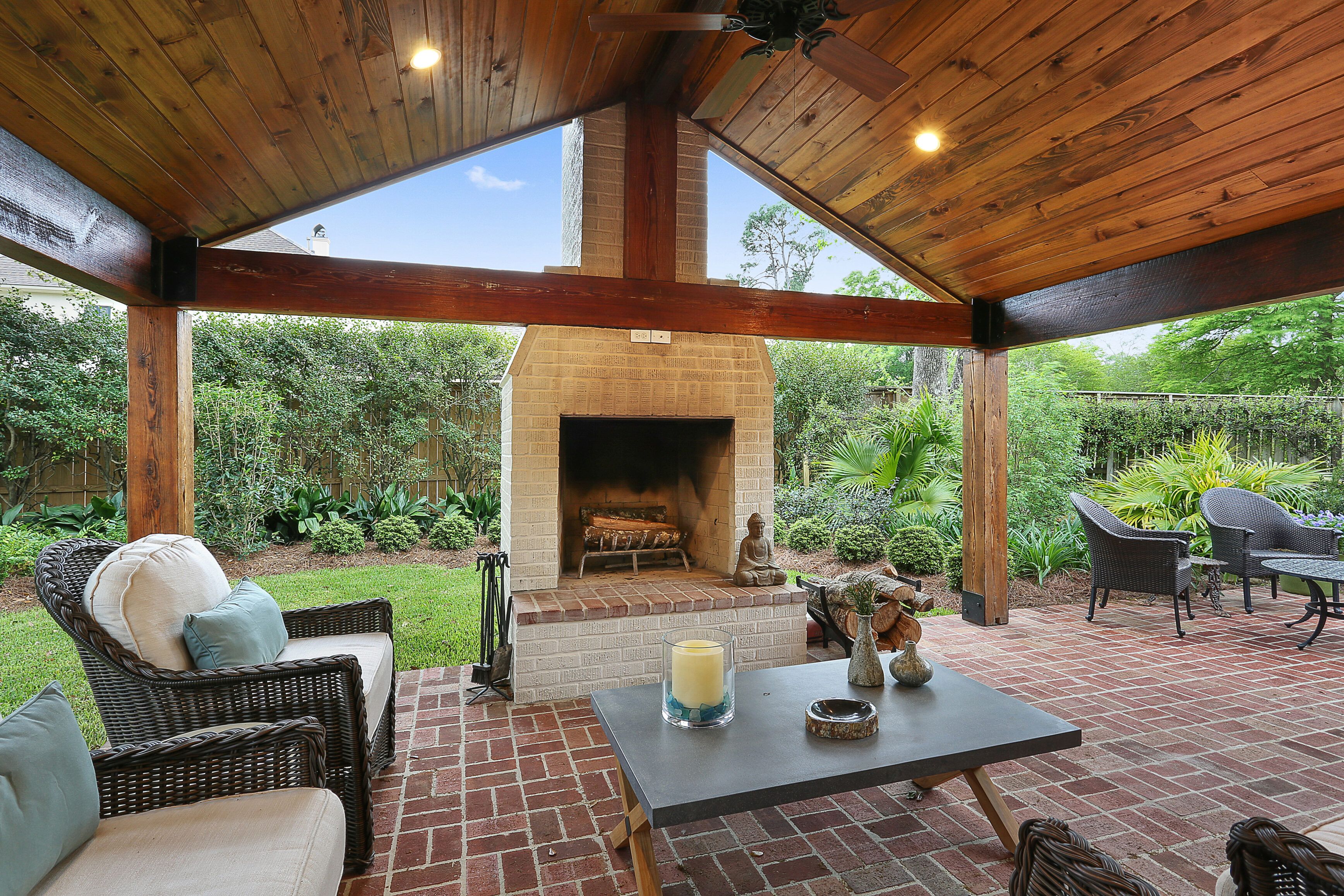It’s possible to make your outdoor space cool and bug-free in a Louisiana summer–here’s how
Spring breezes often signal the perfect time to spend more days outdoors. But then reality strikes, and we must remember that we live in Louisiana, where humidity takes hold of you quicker than a gust of wind. With the right design, however, porches and outdoor living spaces can act as a best-of-both-worlds retreat, especially after a year of being cooped up inside with our computers attached at the hip. So to take advantage of the warmer days, we asked Richard Ourso of Ourso Designs for his top tips for making outdoor spaces ideal for Louisiana living.
“As a far as size goes, a porch should be a minimum of 8 feet deep,” says Ourso. “Anything less really limits your furniture placement.”
Once you’ve determined your usable space, Ourso encourages people to take the elements into account when designing a porch of your own.
“You need to be thinking about where the sun rises and where the sun sets,” says Ourso. “Those need to be taken into consideration. Another thing is winds and breezes. If you’re facing north in the winter, the breezes can really eat you up. In the summer, it’s really nice to have a porch facing south or southeast—that’s where our summer breezes come from.”
Anyone living in Louisiana can attest to the brutal humid heat felt in the summertime, which is why porch ceiling height is so crucial for air circulation. High ceilings and reverse fans can make a world of difference when combating stuffy heat floating above us. “You can change the direction of your fans to spin counterclockwise, which will take the hot air and pull it upward, drawing in fresh air from all around,” explains Ourso.
And with the addition of a screen, you won’t have to worry about those pesky mosquitos disturbing the peace, and it can even help repel unwelcome weather conditions.
“The roll-up screens are pretty cool,” says Ourso. “You can drop the screen down when the bugs are bad, and they also block blowing rains. It also does a good job blocking those winter winds. It doesn’t block them completely, but it definitely helps out quite a bit.”
Having a transition from porch to patio, like a step, is another way to keep out things like dust and leaves. And if you’re longing to create more of a traditional living space outdoors, Ourso says that even a modestly sized space can accommodate both functionality and stye.
“It’s all about the area you have to work with, your budget, and what you’re looking to accomplish,” says Ourso. “I like to make outdoor living areas at least 14 feet deep—it just makes it flow so much easier.”
A grill is a must-have when it comes to an outdoor kitchen, but other items like a burner, sink, prep counter, and island and barstools can be used as finishing touches for al fresco dining. And when you’re cooking up heat in the outdoor kitchen, air circulation should always be on your side.
“Having vaulted cathedral ceilings really helps air circulation,” says Ourso. “We also like to introduce a cupola—it looks like a little chicken coup on the top of your house. It’s a vented structure, and it allows air to circulate air in and out. We also use skylights for more natural light. There are even skylights that open up to let air out and that have rain sensors by which they automatically close.”
Now, time to enjoy that sweet spring air before the real heat sets in.
Find out more about Ourso Designs on the company’s website. And read another designer tip from Richard in this article from the inRegister archives.












